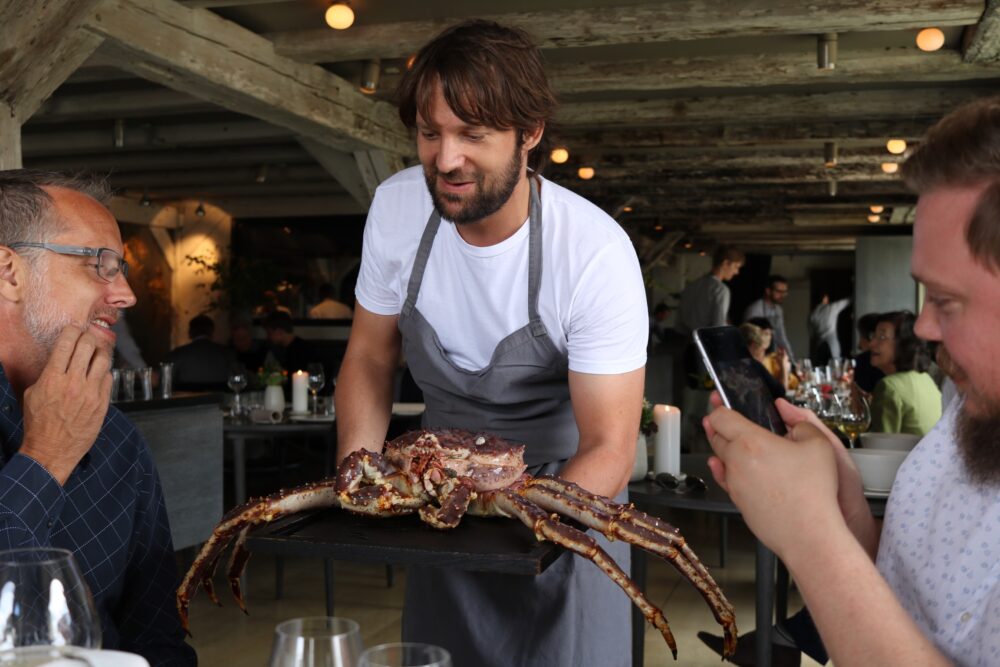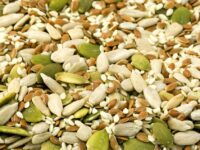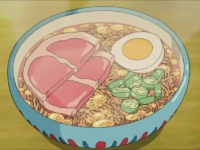“I came all the way across the sea to learn something I can’t learn in the States,” Victor Eng tells me. “This is the place to create new products. We’re creating the standard right now. No restaurant in the world is doing this.” Eng is studying the formulation of new flavors at Noma, in Copenhagen, Denmark, hailed as 2019’s second best restaurant in the world by Restaurant Magazine. As the progressive brain-child of visionary chef René Redzepi, Noma is where art and science intersect to produce the most exotic yet regional dishes known to the culinary arts. Drawing on a philosophy of hyper-locality, the majority of the ingredients come from Noma’s own backyard. But it’s likely you’ve never seen them on a plate before: Scandinavian mosses, ants, molds, jellyfish, and pinecones, just to name a few. However, implementing ingredients like these does not explain why Eng left a coveted position at No. 9 Park, one of Boston’s most prestigious restaurants. The reason for Eng’s pilgrimage was to understand how Noma’s fermentation revolution is transforming the concept of food.
“This is the place to create new products. We’re creating the standard right now. No restaurant in the world is doing this.”
Located in a tricked out shipping container, Noma’s fermentation lab has housed every imaginable ferment, from moose snout to moldy vegetables. Inside, Noma’s food scientists and chefs manipulate microbes to produce an imaginative and astonishing range of ingredients, only five percent of which will see a dish. Despite this, the tedious trial and error proves worthwhile. Unsung but not unused, the discarded ingredients grow Noma’s compendium of culinary knowledge, plotting an exploratory path into unknown territories of flavor. The few ferments that succeed are positively transformative. As Noma’s Director of Fermentation, David Zilbur, explained at Harvard last October, only a few drops of an ingredient like fermented fish sauce adds an entirely new layer of complexity to a dish, which can intermingle with emotion and memory to produce a powerful dining experience. So essential are ferments to Noma’s culinary wizardry, they’re incorporated into nearly every dish.
“What they do at the fermentation lab is stuff that people don’t really think about,” Eng says. “I guarantee the guests have no idea how much thought goes into a dish.” By introducing new ingredients for microbes to transform, Noma’s chefs are tinkering with fundamental metabolic pathways. Typically, Western chefs rely on the Maillard reaction to create new flavors through the heat-driven reduction of sugars and amino acids in carbohydrates and proteins, such as in toasted bread and roasted meat. Microbes, however, expand the possible flavors by decomposing large, less flavorful molecules into smaller, tastier molecules like amino acids, organic acids, esters, sugars, alcohols, and aromatic compounds. This process is as old as life itself. A ferment’s flavor is determined by select ingredients, the environment, and the type of microorganism. Kimchi, yoghurt, and cheese, for instance, come from lactic acids produced by the genus Lactobacillus, while acetic acid is churned out for vinegars by Acetobacteraceae. Noma employs these microorganisms and more.
The process of fermentation is as old as civilization. Evidence of the partnership between microbes and people began over 9,000 years ago in the Neolithic village of Jiahu, Henan, China, where organic residue on pottery jars revealed fermented beverages of rice, honey, and fruit. Fermentation drove technological development like agriculture, horticulture, food processing, and preservation. To prevent spoilage, various microbes were domesticated to produce beer, bread, miso, and more. Microbes in turn gained energy present in adenosine triphosphate (ATP) biochemically mined from carbohydrates in the absence of oxygen.
A microorganism, however, goes further than transforming food. It changes our composition.
At the heart of all this, Eng says, is “the concept of transforming a great ingredient into something greater.” Just as a frying pan is a utensil to transform food, so too is a microorganism. A microorganism, however, goes further than transforming food. It changes our composition. Estimates suggest that people are made up of more microbes than human cells. Inside the gut of every person are trillions of microbes, collectively called the microbiota, with the power to dramatically transform one’s health. Pioneering research has found that microbial composition of the gut critically influences neurodegenerative diseases, immune and inflammatory diseases, behavioral and mood disorders, obesity, cardiovascular disease and cancer. In the bestselling cookbook “The Noma Guide To Fermentation,” Redzepi writes, “I dream about the restaurants of the future, where you go not just for an injection of new flavors and experiences, but for something that’s really positive for your mind and body.” Noma’s fermentation revolution is not only expanding known flavors, they’re reclaiming our right to a healthy microbiome and inspiring a generation of chefs to help reshape who we are.
The Noma Guide to Fermentation (2018)
Nature Microbiology (2016). Doi: 10.1038/nmicrobiol.2016.39
PNAS (2004). Doi: 10.1073/pnas.0407921102Current Opinion in Neurobiology (2020). Doi: 10.1016/j.conb.2019.09.016
Image Credit: Gus Mueller





